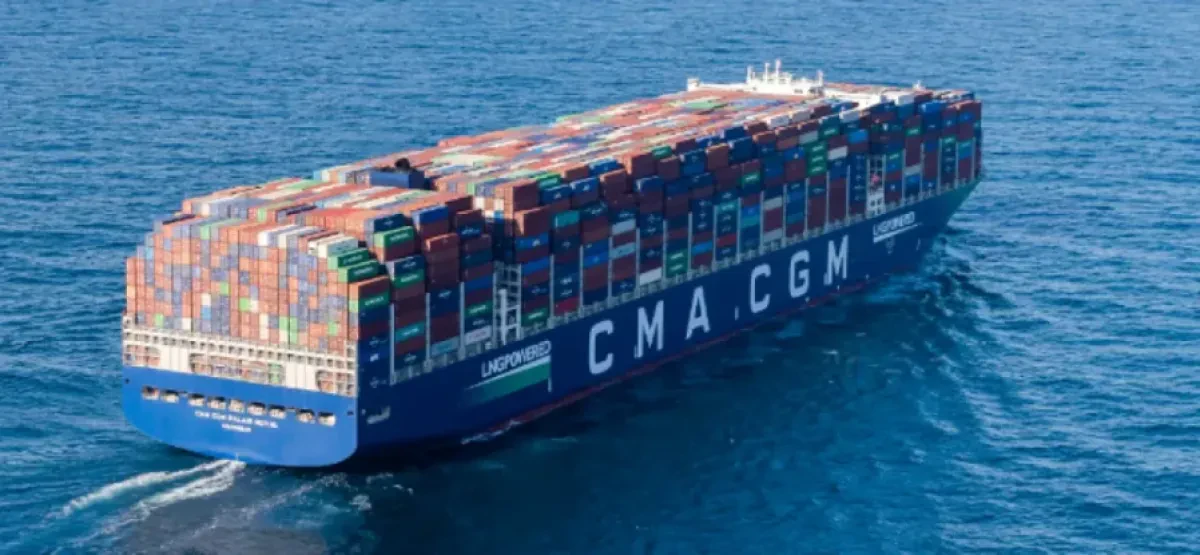With a potential return to Red Sea transit blossoming amidst a shaky ceasefire, we once again find ourselves discussing the short and long-term impacts on Far East – Europe trade capacity and network structures. To be able to hypothesize what this could look like at scale, we must closely examine what subtle operational shifts can reveal to us about carriers’ intentions.
One of the best practices for sniffing out early signals of structural service changes is exception management. Anomalies like repeat omissions and blanked voyages, or volatile vessel deployments, can give hints that a service is on its way out. When it comes to services ‘testing’ Red Sea waters and exploring a way in, we also rely on our holistic knowledge of each carrier’s unique operating philosophy paired with live vessel behavior.
How did we know that CMA CGM would be one of the first carriers to dive back into these high-risk waters back in January? We watched their vessels closely over several months and observed patterns of last-minute inducements (aka unplanned port calls), the unadvertised shortening of transit times in voyage schedules, and occasionally the practice of AIS cloaking in the Mediterranean or West Indian Ocean.
Vessels going ‘dark’ is an enigmatic but sometimes hugely rewarding subject when it comes to odd behaviors heralding more systemic changes. Vessels that go dark turn off their AIS transponders, making them effectively invisible to satellites and enabling them to avoid detection from military units, pirates, and regulatory actors. The latter is only relevant for vessels that engage in illegal practices and doesn’t concern container vessels that use this tactic as an approved security measure. There are also instances where vessels may go dark due to technical issues, but sustained periods of several days or more are widely accepted as intent to avoid detection.
The CMA CGM JULES VERNE has been a mainstay on CMA CGM’s MEX service since December 2023 and is a poignant example of this practice. At 16,000 TEU she's hardly inconspicuous at close range but has completed 8 unscathed transits through the Suez Canal since May 2024, with the most recent on the 20th of September. We once believed her behavior was a sign that the Ocean Alliance’s MED2 would begin formally transiting the Suez again, but it has since become clear that she’s uniquely allotted to this status on the service. With the exception of just one passage in October 2024, her use of the Suez Canal has been exclusively limited to eastbound voyages back to Asia.
Witnessing this same practice on the westbound leg for Far East – Europe services has an added layer of complexity. The military conflict in Gaza and Houthi aggression is not the only high-risk factor in the Indian Ocean or the Gulf of Aden. Pirate attacks are still a common risk as far out as 800 nautical miles off the coast of Somalia, according to the latest Maritime Industry Security Threat Overview (MISTO) release in March 2025. The report also reveals the double-edged impact of the Red Sea conflict; noting that the Cape of Good Hope transit ultimately brought more vessels within their target range, but the presence of heavily armed military escorts have also helped to deter attacks to some degree.
One group of predominantly Maersk operated vessels has caught our attention over the past few weeks. While they are not exclusive to a single service, the following vessels deployed to Far East – Europe Gemini services have all cloaked their movements while crossing the Indian Ocean at least once in the past two months.
- MAERSK CAMPBELL
- MAERSK CAMBRIDGE
- MAERSK CAMPTON
- MAERSK CANDOR
- MAERSK CANYON
- HYUNDAI MARS operated by Hyundai Merchant Marine
At least four of these vessels have gone dark for 10 days or more, and most seem to exhibit this practice while travelling westbound. Two of these vessels, the MAERSK CANYON and MAERSK CAMBRIDGE have both gone dark within the past week; they continue to evade visibility for the past 8 and 10 days, respectively.
Adding to the intrigue, many of them turned off their transponders as far east as the strait of Malacca, only to resume visibility at the Cape of Good Hope. It does beg the question of why vessels would begin to expand the practice as far east as Singapore if the primary threat is Houthis and Somali pirates in the western Indian Ocean. In the absence of any last minute changes to voyage schedules or the captain's next port - there is no definitive evidence indicating that the cloaking activity is currently tied to exploration of Suez transit conditions.
Why do these details matter so much right now? With more vessels potentially going dark to run test voyages through Red Sea waters, or even just to see how close they can get to the Gulf of Aden undetected, it’s important to differentiate among security-based motives. Unfortunately, that’s not always possible until the vessel safely reaches its next destination, or unless the carrier has included clues in the vessel’s schedule. However, given enough repeat actions and supporting signals, it is possible to build a strong case for the next likely contender.
If you need tactical insights on Red Sea developments, are interested in hyper granular vessel tracking with our proprietary ETAs, or simply want to learn more about the visibility Xeneta offers – reach out to us today.
eeSea Signals
- All Far East - Suez Canal Port Pairs + Schedule Reliability
- Suez Canal Weekly Transit Summary - Tableau Permission Required
- Vessel Status + Position Tracing - Tableau Permission Required
- Far East - Red Sea Trade Capacity Evolution - Tableau Permission Required

